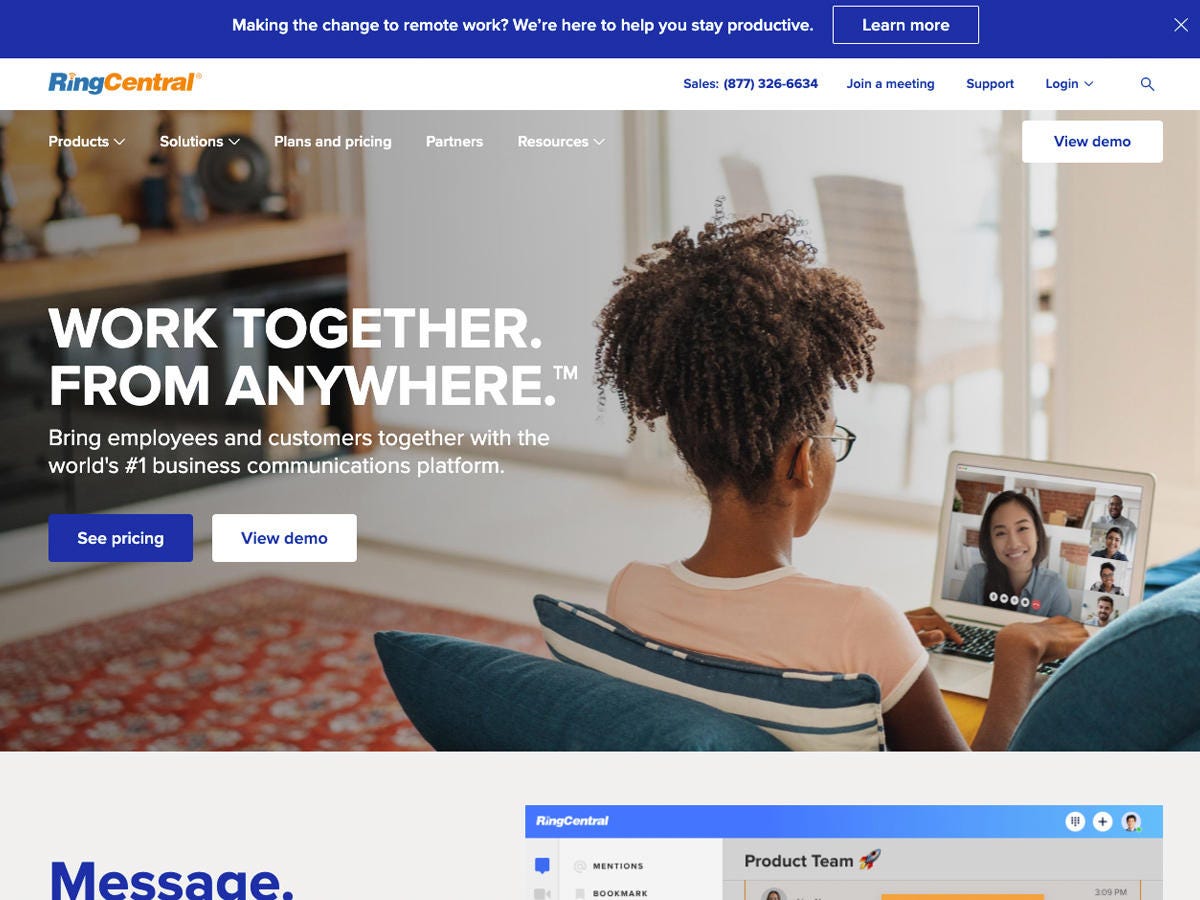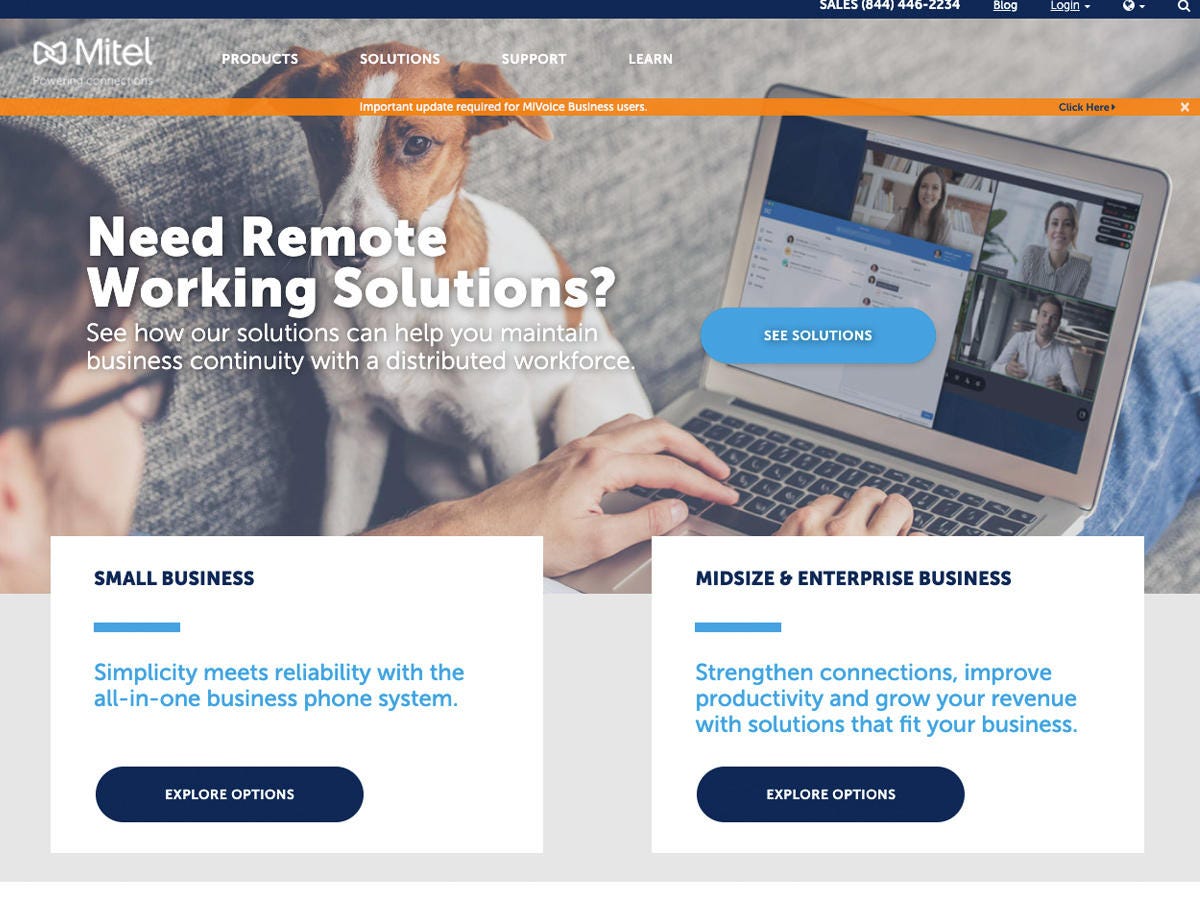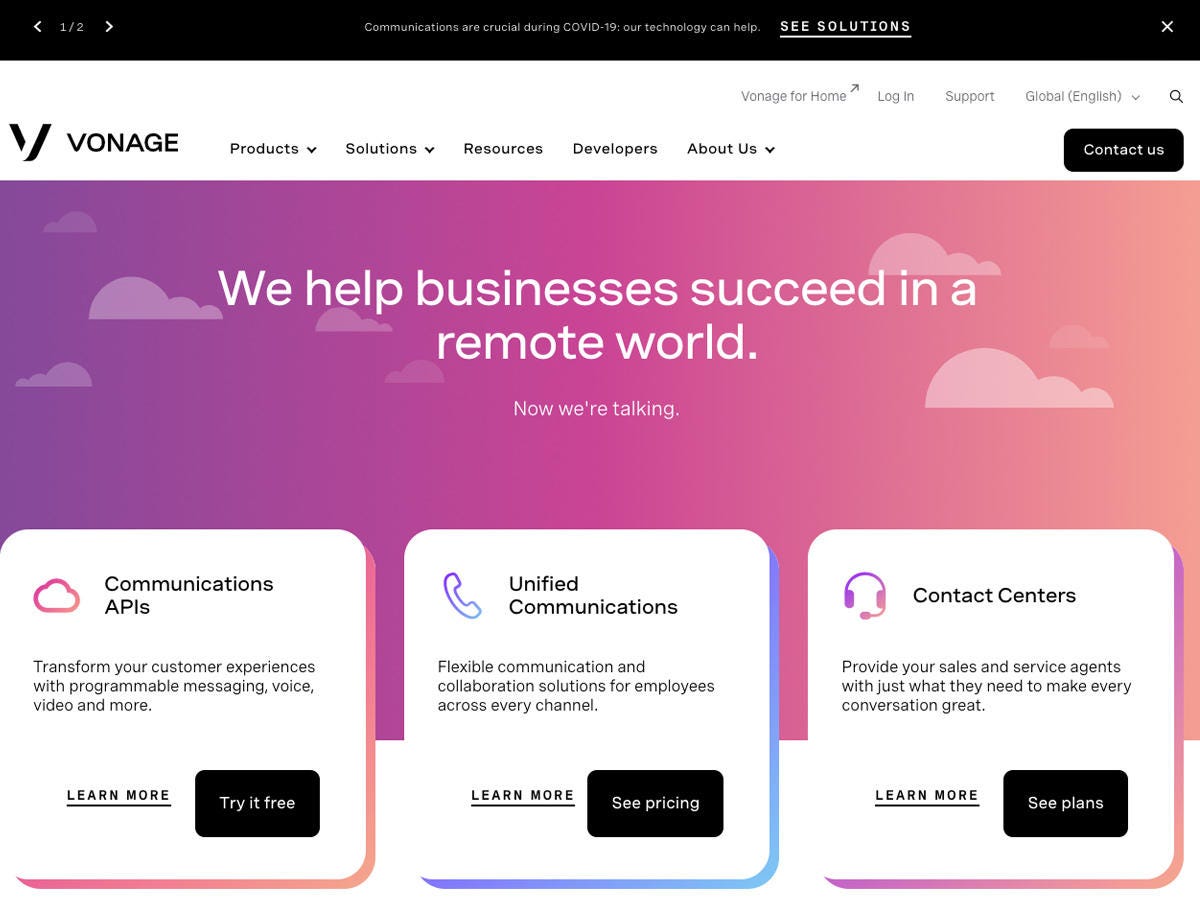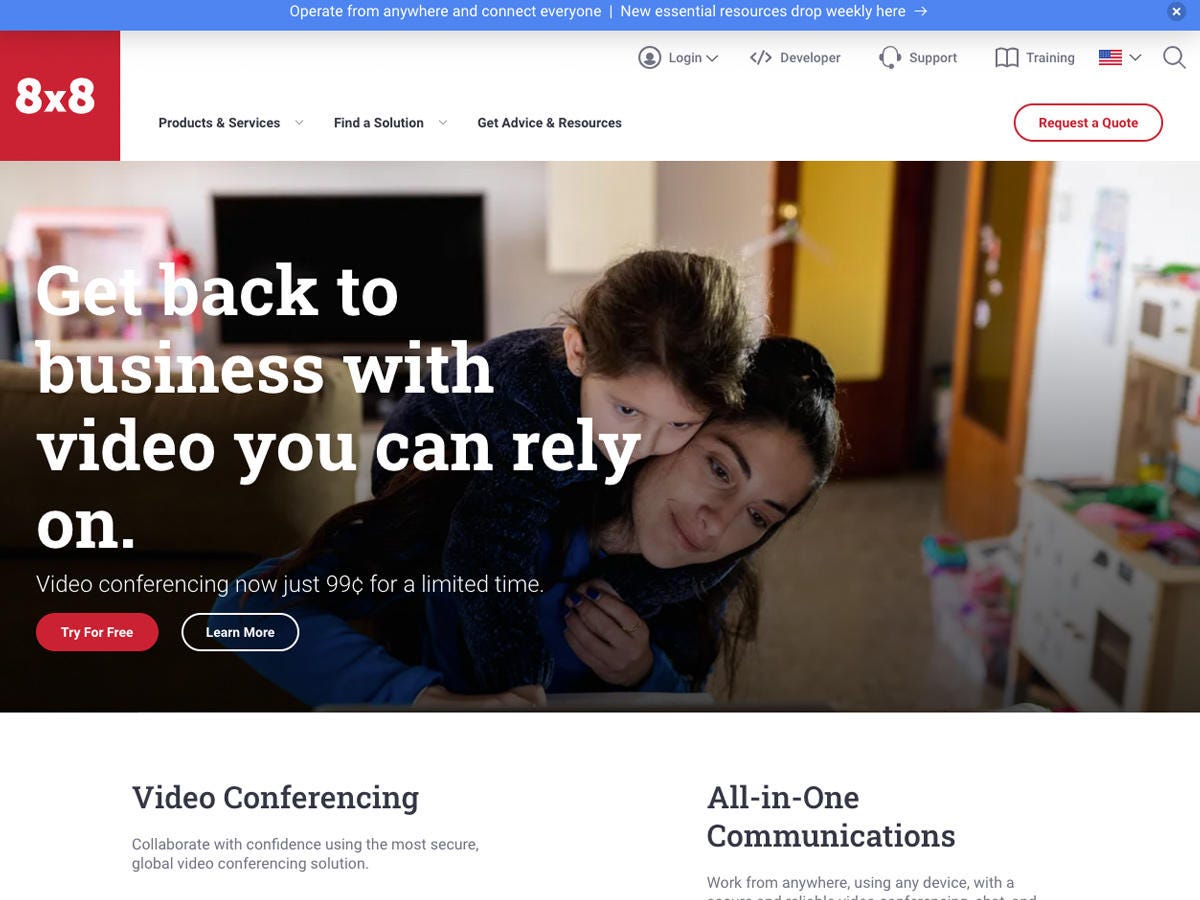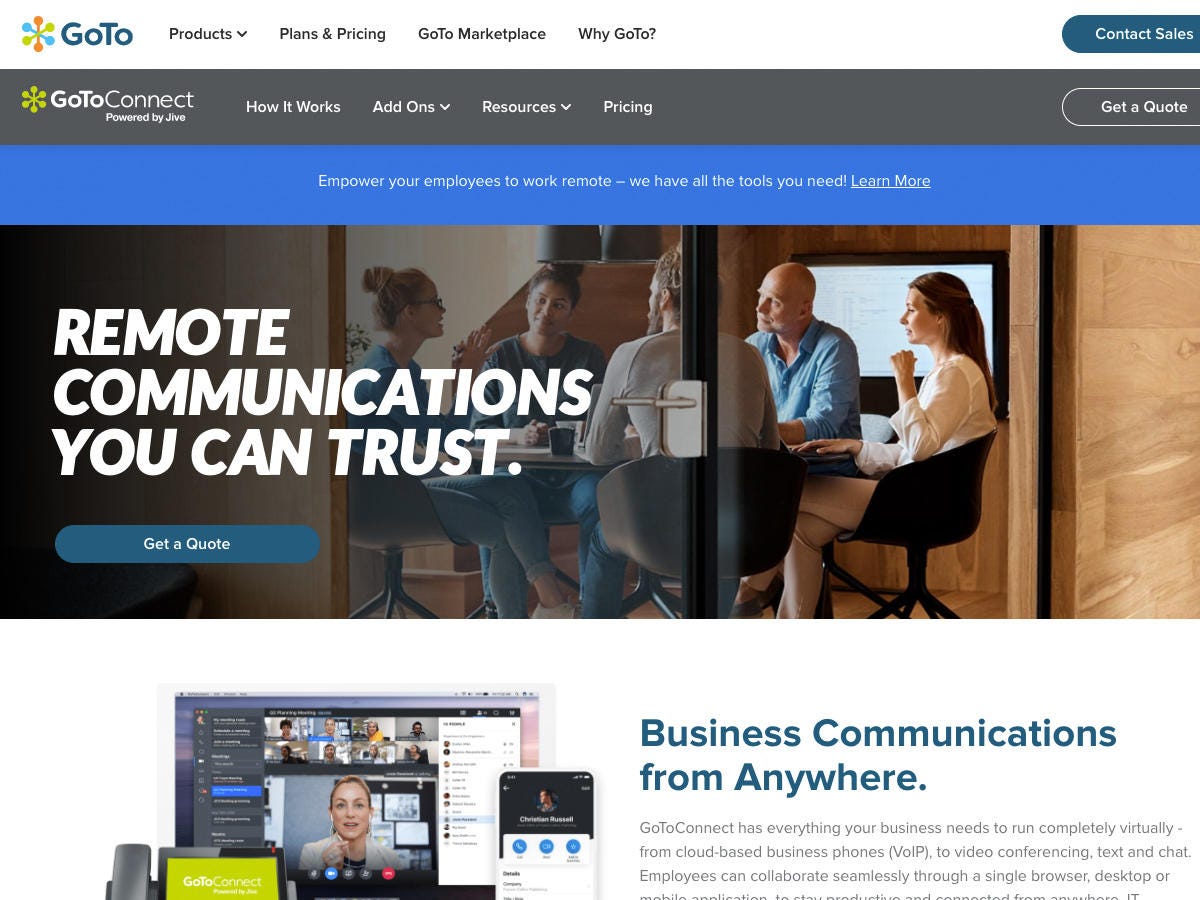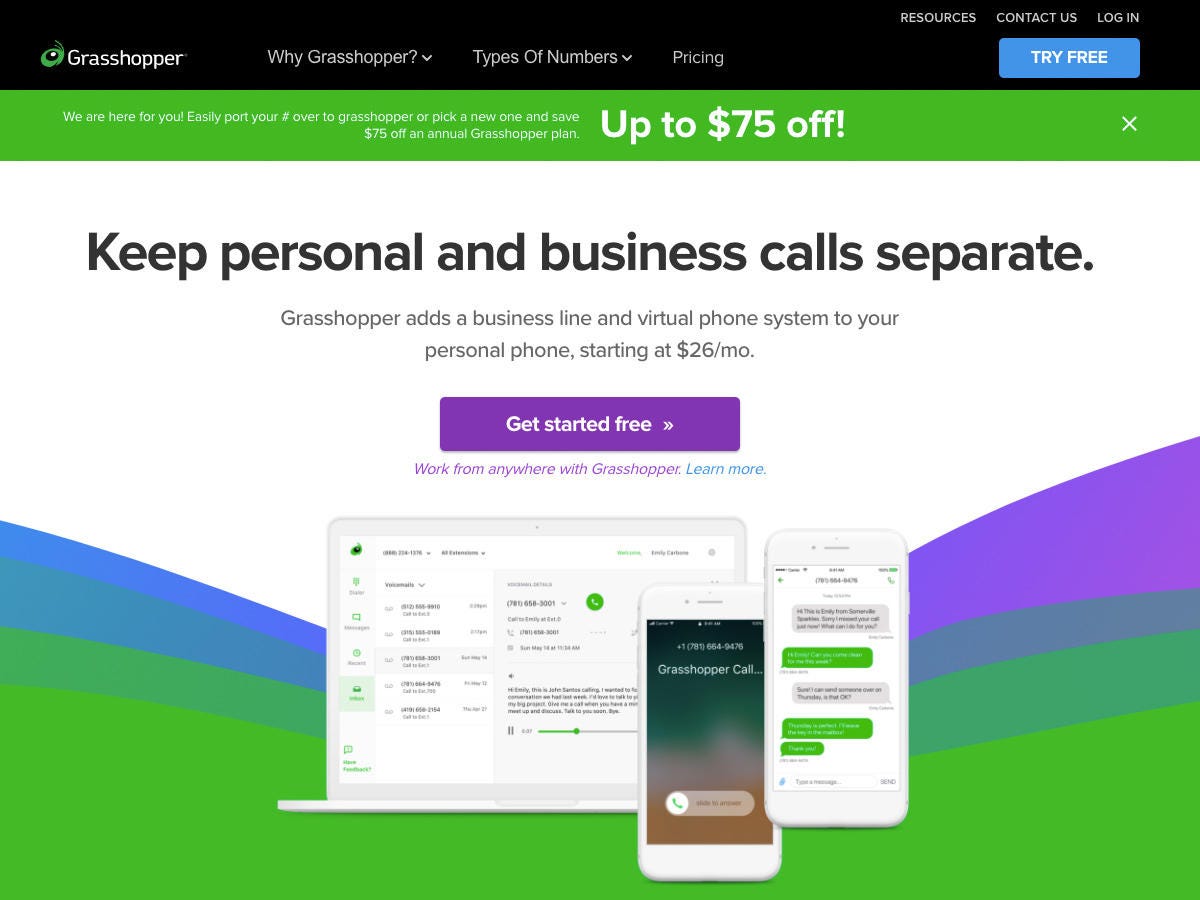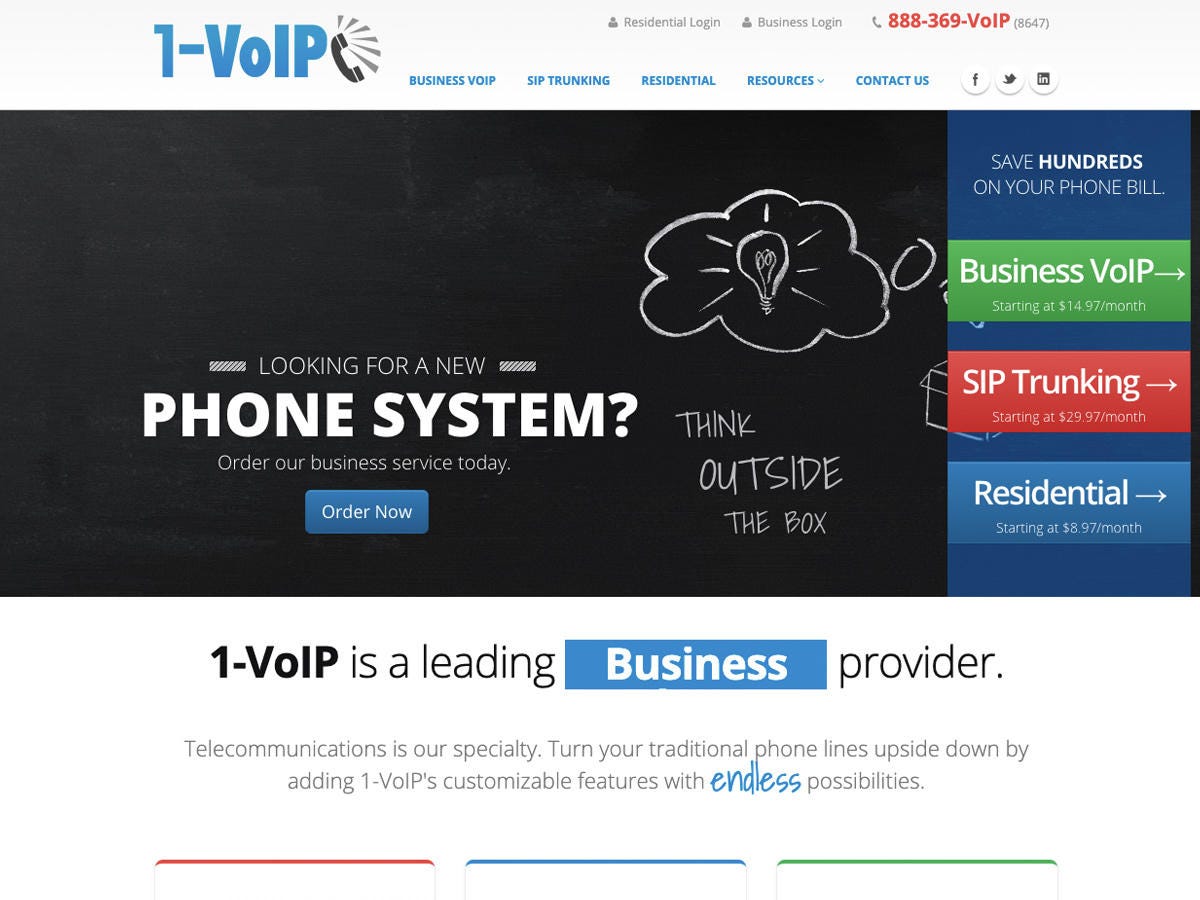Remember when landlines still ruled the land, before smartphones were sophisticated pocket broadband machines? There was a time when telephone handsets were essential business gear, when we put a phone near every chair in the house. Those were the days, my friend. Those were the days.
Now, however, welcome to 2021. You know the story. COVID-19, lockdowns, shelter-in-place, the rise of work-from-home, offices deserted in favor of newly remote workers. We’re in something of a halfway place, where vaccines are helping some folks return to work, while other businesses are still on lockdown. To say life is unpredictable is an epic understatement.
For many companies, especially those that had already gone through their own digital transformation, business was pretty much as usual. Their teams communicate via Slack or Teams, set up Zoom meetings four times a day, and create email chains and threads that can make you question the meaning of life.
But those aren’t the companies and individuals we’re addressing. In this article, we’re talking to companies that still have a handset on every desk (but now the desks are at home), still do business by talking on the phone (really, some folks do that), and who route calls and transfer to extensions (which now have to traverse the planet instead of the building).
For those of you, there are VoIP (Voice over IP) solutions that allow you to run a PBX in the cloud, and connect employees working from home just as if they were wired into the on-premises phone switch. Here are 12 solutions that should help you stay connected.
The most-mentioned VoIP provider among our quick surveys
When I started asking around about VoIP providers, RingCentral was the one mentioned the most. RingCentral offers solutions for small vendors all the way up through giant enterprises, and it also has a focus on developer integration, allowing external vendors to hook into the RingCentral environment in new and creative ways.
Their core product is RingCentral Office, which offers all the key virtual PBX features, including auto-attendant, company directory, call forwarding and handling, and multiple extensions. Additional programs provide voice mail, call forwarding, fax, and meetings and webinars. RingCentral has a nice iOS and Android app that allows you to turn your smartphone into what seems like a more traditional office phone for callers.
Add a second line to your mobile phone and then just keep expanding and expanding
Don’t want to give our your personal mobile number to customers and clients, but also don’t want to carry a second phone? Consider Line2 which — wait for it — adds a second line to your phone.
Actually, Line2 offers a bit more. It moves the traditional hard-wired on-premises PBX to the cloud and moves the dedicated PBX handsets into your team’s smartphones. You can assign additional phone numbers to phones, transfer calls between team members, set up an auto-attendant function to annoy callers while sounding official. You can even turn your team into a virtual call center with the ability to dynamically distribute calls to agents.
Keep the in-office feel, but at home
We last included Intermedia in our best email hosting services roundup, and now it’s back in our VoIP list. Intermedia actually offers a number of unified communications products including virtual PBX, SIP trunking, and various conferencing apps. In this roundup, we’re looking at the company’s combined system, Intermedia Unite.
While Intermedia Unite recommends mostly Polycom, Cisco, and Yealink VoIP phones, the company’s Anyphone BYOP (bring your own phone) program allows certain other devices to connect into the Intermedia VoIP environment. In terms of features, this is enterprise VoIP with all the fixin’s. As you might imaging from a vendor we recommended as a leading email host provider, Intermedia Unite has strong ties to Office 365 and Workspace (formerly G Suite) as well as Slack and Salesforce.
In pandemic times, the ability for workers to bring their desk phones home, plug them into their home Internet, and still have a receptionist capability that allows AAs and operators to view the availability of everyone in their organization, perform blind transfers, warm transfers, and transfers to voicemail — all remotely — is a huge boon.
An old-school global PBX provider who has successfully pivoted to VoIP
Founded in 1973, Mitel is an old-school traditional PBX provider that has successfully made the pivot to VoIP. Here’s a fun story. Mitel was founded by Canadians Michael Cowpland and Terry Matthews, and as the story goes, is a portmanteau derived from “Mike and Terry Lawnmowers.”
Since its pivot, Mitel has been mowing through acquisitions, including handset maker Polycom in 2016 and ShoreTel in 2017. While the company does provide small, medium, and enterprise solutions, it’s the enterprise offerings that stand out. Mitel, for example, provides the unified communications network for Major League Baseball and its 30 clubs.
This isn’t your grandma’s VoIP provider (anymore)
It would be pretty hard to do a list of VoIP providers without including Vonage. While the company made its name in home-based VoIP solutions, it also dominated the news for less savory reasons. Its IPO, partially funded by customers whose investment crashed, was named one of the 101 Dumbest Moments in Business for 2006. Its then CEO couldn’t preside over the public offering because of previous encounters with the SEC. Around the same time, a jury found Vonage guilty of infringing on patents from Verizon, Sprint Nextel, AT&T, and Nortel. And, on top of all that, Vonage was sued by 32 states and had to pay seven states’ legal costs for confusing business practices, refusing to make refunds, and so-called “free” services.
So, how could we possibly recommend Vonage? Well, since 2019, it has been working hard to rebrand itself as a B2B cloud services provider with a conversations API (applications programming interface) designed to allow enterprises and developers to create communications containers within their apps. Vonage’s One Vonage platform integrates unified communications, programmable communications, and contact center operations on top of the public cloud infrastructure and across the vonage global carrier network.
Gone are the days when you might try to set up a Vonage account for grandma. But if you’re a business working on a unified communications infrastructure, you might want to give Vonage a look.
A comprehensive offering with solid international cred
8×8 is often classified as a small business VoIP provider, but that doesn’t do the company credit. Formed back in 1987, it was originally a chip design firm. Through acquisitions and product pivots, it has acquired video conferencing products, VoIP technologies, a contact center company, open source chat software, and CPaaS (communications platform as a service) technology. As of 2019, the company had been awarded 128 patents in the areas of semiconductors, video processing algorithms, computer architecture, and more.
The company still appeals to small businesses with its basic cloud PBX plans. The company offers some low-cost international plans that appeal to those who need to connect around the world. It’s possible to move up to all-in-one voice, video, and chat, and then really grow into contact center capabilities, adding in analytics and collaboration. Underlying all of this are API options that can be tapped either by your own in-house custom solutions or a hefty variety of cloud integrations.
That old landline feel from a very modern Internet-connected box
There was a point back in 2011 when my business phone was all about Ooma. For years, I was pre-smartphone. I ran a business from home, which meant I had to manage both personal lines and business lines. History note: Back in the olden days, people had actual wires run into the house for phones, and then throughout the house to handsets.
Unfortunately, the old twisted copper wires started getting worse and worse, as landline carriers lost interest in POTS (plain old telephone service) lines. So, wanting to keep the feel of a phone at every seat (which seems so bizarre to me now), we used an Ooma box as our gateway between our Internet connection and physical handsets.
I finally dropped Ooma when the complexity got out of control (and didn’t work). It also didn’t help that my wife hated the complexity of the system. As I described in an article back in 2014, “In any case, I’d had it with the excessive level of complexity our phone system required. I had both an Ooma and an AT&T Microcell taking up ports on the router. I had a Link-to-Cell handset base station plugged into the Ooma. I had a ton of power cords and power dongles going under the desk. And it was all unreliable, cranky, and in need of more duct tape.”
I eventually dumped it all in favor of an iPhone and Apple Watch. Rather than having a handset at every seat, I just wear the watch which allows me to answer calls anywhere. But the Ooma still gets used by my ZDNet buddy Jason Perlow (although less so now that he has to Zoom everywhere). Jason, too, adopted the Ooma.
But what of today? Should you consider Ooma in 2021? Yes. Ooma has not stood still since I used it. They’ve moved strongly into the enterprise world, expanded their handset offerings, and expanded their service offerings. What I always liked about Ooma was their clear management interface and a wide range of customizable options. Those exist and have been expanded on considerably. The company has also integrated a home security offering into their main system, with motion sensors, window sensors, and water sensors.
Here’s my bottom line: If you still like the landline feel, multiple lines, and dedicated handsets, Ooma is a good place to go.
Unified communications from the folks who make GoToMeeting
There is nothing about GoToConnect’s corporate parentage that won’t give you a headache. GoToConnect is part of the line of products that include GoToMeeting and GoToWebinar. Near the top of the corporate chain is LogMeIn, which acquired what was then called GetGo, a spin-off containing the GoTo products from Citrix. LogMeIn itself was acquired by private equity firms Francisco Partners and Evergreen Coast Capital in 2019.
While GoTo is not the company’s name, they do business under the GoTo logo and goto.com URL. This hurts even more because GoTo.com was once part of Yahoo and Overture Services. In fact, back in the late 1990s, Goto.com was one of the most popular search engine destinations and somewhere along the way, the domain made its way to LogMeIn. To make the brain box bang even more, GoToConnect was previously known as Jive Communications, not to be confused with Jive Software, which provides an intranet collaboration solution owned by Aurea.
So, now that we’ve covered GoToConnect’s family tree, let’s talk about the offerings. First, of course, is its tight connection with GoToMeeting and GoToWebinar, video offerings almost as well known as Zoom in this pandemic-wacky world. Of particular interest is how well done GoToConnects administrative management tools are, allowing drag-and-drop setup of powerful automated assistant and call forwarding business logic.
The company offers just about everything you’d need for a business PBX, implemented with tight integration to other cloud services like Salesforce, Zoho, Google, Slack, and Microsoft. First and foremost, if you’re a GoToMeeting or GoToWebinar company, you’ll want to consider GoToConnect. But if you want to build out an Internet-first PBX environment, give GoToConnect a look.
Any easy solution for fixed-cost extension expansion
I wasn’t familiar with Grasshopper but kept bumping into it as I researched this article. And, wouldn’t you know it? It’s also owned by LogMeIn. Think of it as the cuter little cousin of GoToConnect.
What stood out about Grasshopper was its very manageable billing structure for small businesses. While the company offers one number, three extension plan and a three number, six extension plan, the winner here is the five number, unlimited extension plan for $80 a month. This is per-month, per-user. It’s just per month. So if you have a growing small company and you want a virtual PBX with a few numbers (like one for main, one for sales, one for support, etc), and an extension for every employee then, boom! Eighty bucks a month. If you hire more people, don’t sweat it. You’re just budgeting that one $80 per month fee.
What Grasshopper doesn’t have is any original equipment. You provide your own phones or mobile devices. Then you get the usual VoIP, call forwarding, voicemail, extensions, transfers, and so on. There are no call center options, though, so if you’re building out a major call center, you might want a different solution. But if you want a fixed-budget PBX that can generally scale without added cost, hop on over to Grasshopper.
Phone service integrated with Nomorobo
At first glance, 1-VoIP looks like almost any other business phone service. Want to pay for metered calls? Check. Don’t want to pay for metered calls? Add a few bucks a month, and then check. Want to pay by extension added? Check. Want to pay to effectively rent a handset? Check.
Look, 1-VoIP does the deal, but it’s not a great deal. It supports many of the business phone features you want, like music on hold, extension transfer, queues, auto-attendant, virtual fax, forwarding, and all the rest. Yada-yada-yada.
We were ready to dismiss this as a yawn when we stumbled on its killer feature: integration with Nomorobo. If you’re not familiar with Nomorobo, it blocks most incoming spam calls. On individual smartphones, it’s an app that’s a bit of a hack. You have to route all your calls through Nomorobo, and it then passes them back to you. That adds delays and annoyance to your callers. But with 1-VoIP, Nomorobo is integrated into the virtual PBX. That means that if you’re using a real operator rather than a virtual attendant, you won’t be harassed with all those incoming calls. It’s a well-done feature for a PBX.
Middle of the ground VoIP with a stand-out option: a real human answering the phone
When I started my first company, few people worked from home. Businesses expected to call into companies and get live receptionists (yes, this was the dark ages). As one of my first startup activities, I wound up contracting with a local answering service, shunting all my calls to them, and they would then call me back to transfer the call to me. It was a pain, but it got me deals I otherwise would have had no hope of getting.
Today, of course, we’re all used to email, texting, web forms, and social media. Calling into a business is far more rare. But there are still old school industries for whom a live attendant would be a key business option.
Although most of Phone.com’s plans are pretty much middle of the road, with relatively low-end pricing, the real attention-getter was their definitely-not-cheap plans that included a live attendant answering the phone. That real human can then transfer to an extension or a mobile phone, sent to voicemail, set up appointments, and follow a script.
Feel free to check out Phone.com for their run-of-the-mill unified communications offerings. But if you want an integrated solution with a real human answering the phone, definitely give Phone.com a look.
Every broadband provider, ever
Everyone will upsell you VoIP capabilities
When considering a VoIP option, don’t forget your broadband or telecommunications provider. Nearly every cable service and phone service (including Verizon, AT&T, and all the traditional providers) offer VoIP services. In fact, many of them push those services so hard, it’s often difficult getting cable modem service without spending a whole lot of extra time talking agents out of the VoIP upsell.
That said, don’t dismiss your broadband provider out of hand in favor of the players we outlined above. Most broadband VoIP providers have their services (and rented equipment, naturally) well integrated into their overall offerings, which means that you get a one-stop shop for both data and voice. Solutions are often easy to implement because the cable installer will set up your VoIP for you, and you usually don’t have to make any challenging hardware decisions.
A few years back, my octogenarian Dad refused to use a smartphone and wanted wired telephony. But POTS was no longer available in his area. I made one call to his local cable provider and the installer showed up, set it up, and taught him how to use it. It was about the easiest network install ever, and by far the easiest network install for my dad. Whether you’re looking for residential VoIP just for personal use, residential VoIP extended for a new work-at-home life, or business VoIP, give your already-embedded provider a fair look.
Our process
This one took a little creativity. I haven’t touched an RJ-11 jack in six years or so. That said, I did a whole lot of VoIP setup back in the day, and I worked with a number of the vendors listed here. To expand on that list, I reached out to telecommunications managers I know and asked them for their recommendation. Most of them had also left VoIP in the deep dark past and were spending their time dealing with mobile device management issues and app deployment.
But some of them still had old-school customers, old-school managers, or old-school business practices that benefited more from a unified phone system than a wide scattering of tweaked up smartphones. The companies listed here are mostly derived from their recommendations.
I want to mention one such company — although I won’t mention them by name. This company got an honorable mention from a few of the professionals I talked to, but some of the details were hazy. I reached out via the company’s pop-up chat box and was pleased to reach a human rather than a bot. Five minutes later, after trying to get details on the company’s competitive advantages, I was asked “Do you need VOIP services or not?” The agent got ruder from that point on. So that company is getting no mention here at all.
And this is a lesson to companies: Be careful if you offer a chat option on your website. If your agents are unpleasant, you might lose opportunities. I just pulled a company out of a “best of 2020” list because their operator was impatient and rude — and therefore not qualified to be considered “best of” anything.
How to choose
The single most important thing to do is identify your needs clearly. Do you need extension forwarding? Do you need voicemail? Do you need a human attendant or will an automated attendant do? What apps do you need to integrate into? Make a full laundry list of requirements and desirables. Then start shopping the list.
If I were doing it, I’d set up a spreadsheet with all the factors I needed, and then I’d cross-index each vendor’s offerings in the spreadsheet. When done with my research, I would probably be able to see who came closest to my needs.
Remember that price may be an issue, but it’s far from the only issue. Don’t focus on saving a few bucks a month if your phone system is your primary link to revenue-generating customers. Make sure you’re able to provide the phone service your customers expect, because that’s how it will pay for itself.
What about you? Are you still using landlines, handsets, or VoIP? Let us know in the comments below.


